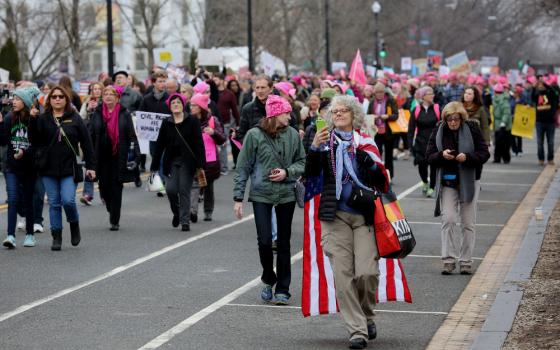For many women in the United States, Election Day 2016 was a crisis. Almost immediately, women began talking, planning and organizing on Facebook and other social media platforms. It became a movement so widespread that on Jan. 21, the day after Donald Trump was inaugurated as the 45th president of the United States, millions of women took to the streets for what would become the largest single-day protest in the nation's history: the Women's March.
For example, an estimated 8,000 to 9,000 people marched in Lansing, Michigan — among them, Sr. Audra Turnbull, now a 29-year-old second-year novice with the Sisters of the Immaculate Heart of Mary in Monroe, Michigan. Turnbull describes the march as "electric" and says it gave her a focus for her post-election shock.
"I worked on the fact that, as a white woman, I can use my privilege to speak up," she told NCR. "I felt so compelled to be on the frontlines. I wanted to do the right thing."
In the months following the Women's March, Turnbull took part in additional demonstrations against some of the Trump administration's policies, namely the Muslim travel ban. She says whenever there was news out of Washington, she would search Facebook to see if there was going to be a rally near Monroe. "There usually was," she said.
It turns out Turnbull's experience isn't unique. In the last year, women in the U.S. have, en masse, become more politically active.

